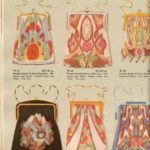"The Mediator Between the Head and the Hands Must Be the Heart". Metropolis 1927

Industrialization exploded between the two world wars. Urban centers expanded. Steel defined the landscape. And with it, grew a movement in art and in architecture tempered toward the linear and mechanical. It was called the Machine Age.
In America it was a time when everything was going big. While industrialization spearheaded innovation, the machine powered progress. The Empire State Building scraped the sky. Suspension bridges connected people and places. America evolved past its rural beginnings to an urban magnificence.

Metropolis, one of the first sci-fi films in its genre, projected the emergence of this utilitarianism in a black and white silent movie (featured photo courtesy of Metropolis film).With stark shades of grey the 1927 movie spotlighted a time when humanity risked being lost in a punctuated, precise and cold mechanized world. It questioned, could we lose our heart in this fascination toward the machine?
Let's look at how two manufacturers influenced the things we wore during this time and how the human heart found expression in the details.
Whiting and Davis
Whiting and Davis Co introduced the production of mesh to the fashion world in 1909. They transformed the ancient art of chain mail into exquisite fabric. The original mesh was created by hand using only a ring mesh method. This method was slow. By 1914 the first automatic machine for making mesh was patented. Consequently, with the power of the machine, Whiting and Davis Co. expanded mesh production and dominated the market.
 As stated in a Whiting and Davis advertisement of that era, their mesh handbags went 'Hand and Hand with Fashion.' The geometric details and zigzag patterns projected the time's architectural focus. While linear precision continued to influence the design, vibrant color embellished the mesh furthering its appeal. Hence, this world of metal was not one of greys but of brilliant color. Metal beautifully melted into aesthetics.
As stated in a Whiting and Davis advertisement of that era, their mesh handbags went 'Hand and Hand with Fashion.' The geometric details and zigzag patterns projected the time's architectural focus. While linear precision continued to influence the design, vibrant color embellished the mesh furthering its appeal. Hence, this world of metal was not one of greys but of brilliant color. Metal beautifully melted into aesthetics.

Although there were other mesh companies, none transformed the market like Whiting and Davis. They designed and introduced the mesh scarf and dress. These items gained immense popularity. In a 1952 movie, Jane Russell romanced Robert Mitchum wearing a chain mail dress. As a result Whiting and Davis’ popularity skyrocketed. Mesh fabric was now sizzling fashion. Most definitely, the machine and fashion world co-existed with profound symbiosis. As a result, beauty was not lost but enhanced during this period thanks to the machine.
Ostby and Barton
 Ostby and Barton Co. located in Providence, RI manufactured jewelry from 1879- 1950s. As a jewelry design house, the Ostby and Barton stamp denoted quality and style.
Ostby and Barton Co. located in Providence, RI manufactured jewelry from 1879- 1950s. As a jewelry design house, the Ostby and Barton stamp denoted quality and style.  Delicate filigree work and bold geometric shapes identified the manufacturer. To this day, Ostby and Barton jewelry fetch a big purse in the antique jewelry market.
Delicate filigree work and bold geometric shapes identified the manufacturer. To this day, Ostby and Barton jewelry fetch a big purse in the antique jewelry market.
The Sinking of The Titanic
In addition to its reputable name and impeccable quality, this company shares in one of the most momentous encounters between man and machine of the 20th century. The sinking of the Titanic. As the story is told, the Ostby father and daughter pair often traveled to Europe to acquire design ideas for their jewelry. On one fateful trip in 1912, the pair boarded the ocean liner Titanic. Due to the confusion and lack of lifeboats, the daughter and father were separated. She survived the disaster but the father did not.

She went on to become acting partner in the company and to build it to "the largest ring manufacturer in the world." Most notable and oftentimes overlooked, this tale demonstrates one of the early achievements of women in business.
Because it came out of an age dominated by the machine, it has special significance. This era evokes inspiring stories of creative innovation and human resilience. Therefore, the fascination with the machine exposes our humanity and indomitable spirit and does not defeat it.
Learn more about the history of the collision of the Titanic and the Ostby and Barton Co.
Read more about The Machine Age.
The Definitive Historical Guide to Whiting and Davis Co.








